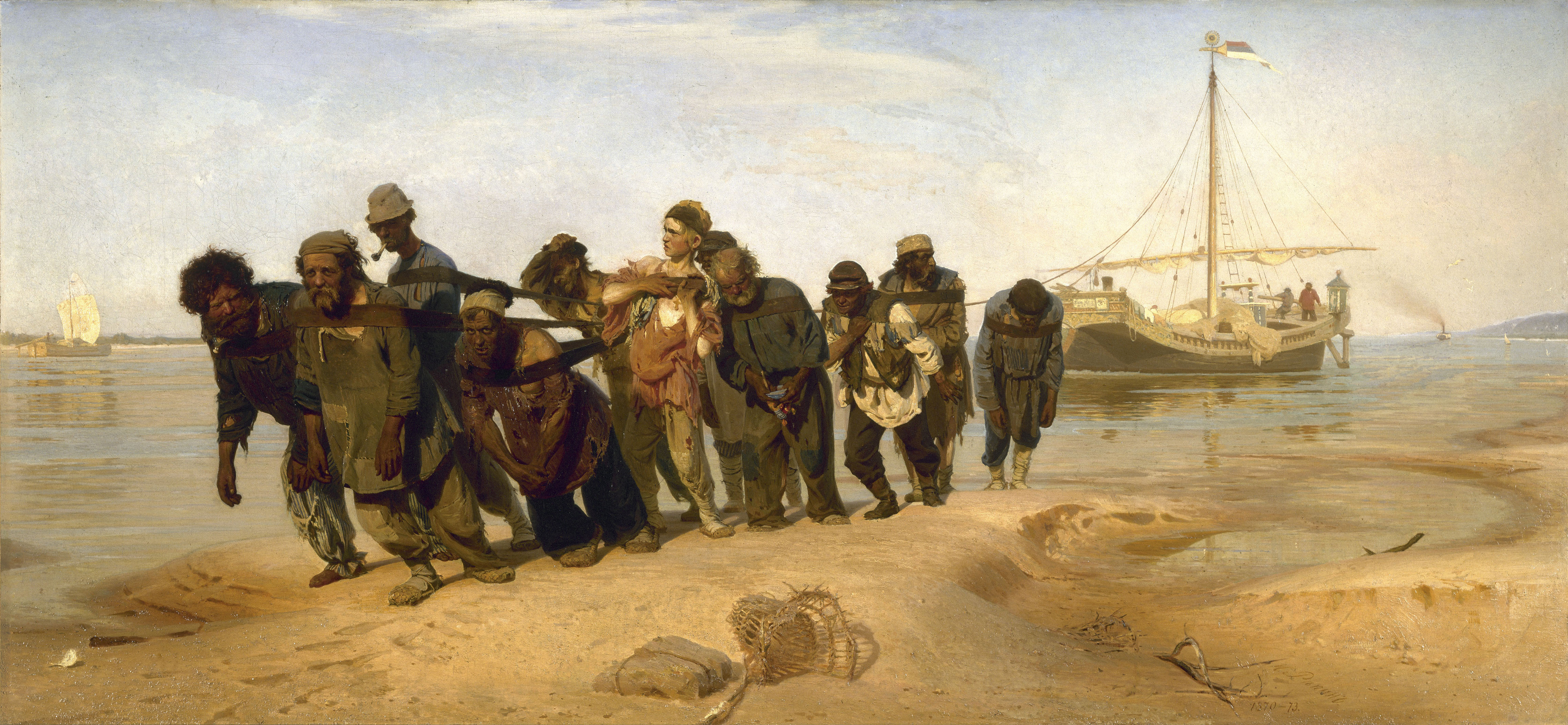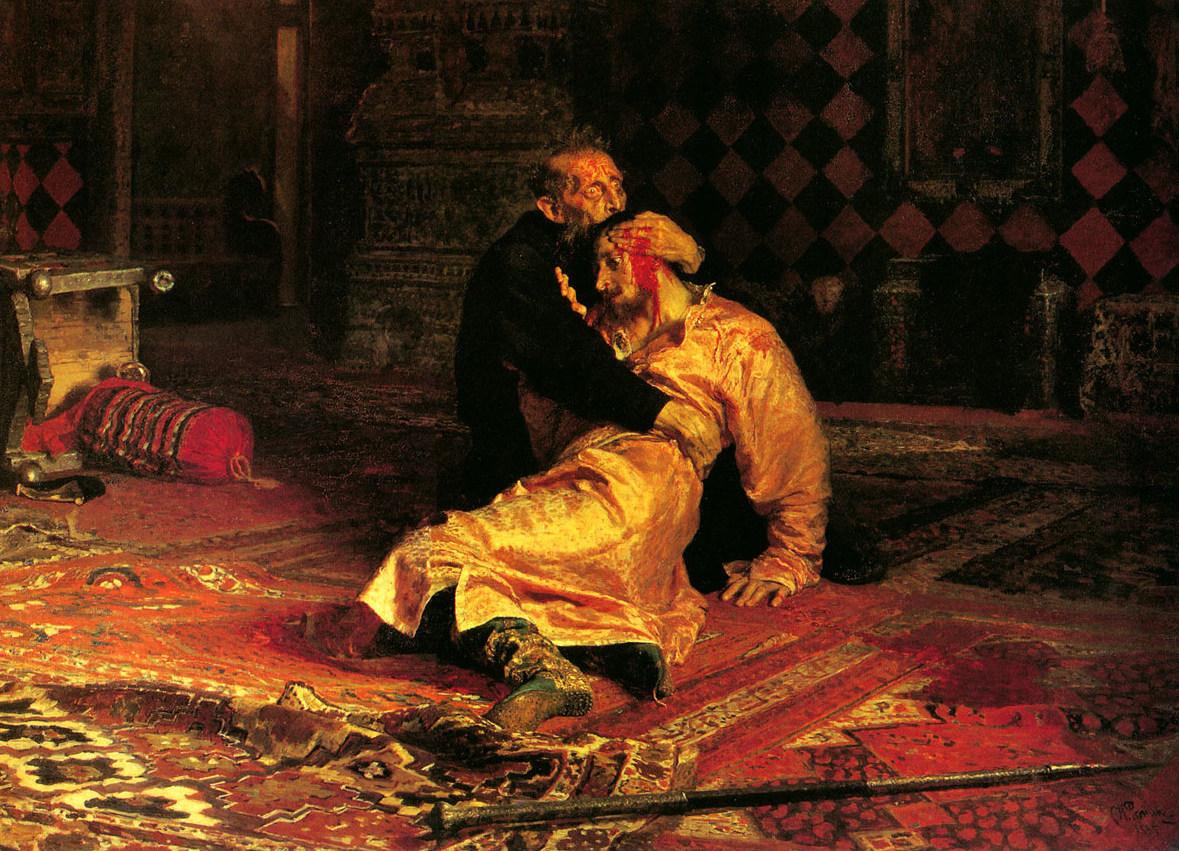The St. Petersburg art scene has exploded since I last wrote you. Years ago now, a few exceptional artists from the Imperial Academy, St. Petersburgs premier, and indeed only, art school, decided they had had enough of the restrictions on what they could and could not paint. These painters then left the institution and formed their own sort of artists guild, comonly referred to as the Wanderers. This separation lead to an interesting phenomenon never before seen in Russia, that of private art collections outside of icons.
Several of the wealthy merchants gave purchased vast quantities of the art that is now being produced by these Wanderers. The paintings they produce are powerful, with much to say about the current state of affairs here in the city and throughout Russia. The depth and skill these artists have really belies their love for, and interest in, the common people. The common folk have never been so well represented.
I have recently taken the liberty of exploring several of the private art collections in St. Petersburg, and the messages behind these paintings have not failed to move this old man. However, one artist stands above the rest in skill and in statement. That artist is Ilya Repin. I cannot wait to share with you the wonderful talent of this man, and to ponder with you on the power of his paintings.
However, I feel to first share with you a little about his life.
Ilya Repin is a man of the people. He was born a commoner, and began his artistic career painting icons. However, his talent was soon recognized, and he was accepted at the Imperial Academy, where he graduated in 1878. He soon after joined the Wanderers (Jackson, 1991). This ties him closely to the Russian commoners. He is at home among them, they are his friends and his family. This provides significant inspiration for his work, as you will see later.
Although his early life may set him apart from many of his contemporary's, what really sets him apart is his work. The first piece I would like to share with you is Volga Boat Haulers. In it, Repin provides an insight to the life of the common laborer. A man at the gallery in which I saw this painting said, "In this substantial canvas, manifestly destined for public exhibition, we see the artist confronting large social issues, contrasting the harsh conditions of the workers with their inexhaustible strength." (Weisberg, 2002) In it, we can see the weariness of the workers in their posture and into their faces, the barge they struggle to pull looming behind them.
 |
| Volga Boat Haulers |
You might think that this painting is a direct statement about the oppression of the people. However, this may not be the case. The man went on to say, "The content of many canvases remains ambiguous, admitting of no narrowly defined political reading. As often as not, the artist's comments on the individual canvases centered on painterly rather than ideological problems." (Jackson, 1991) This tactic of leaving the message of his paintings undefined opened the door for Repin to paint whatever he desired. Additionally, it gave the observer the freedom to feel however they wanted about the subject matter. The work became less of a statement, and more an invitation to ponder.
 |
| They Did Not Expect Him |
As an example of this, Repin's canvas, They Did Not Expect Him, was hotly debated for years. The painting shows a family sat at dinner who unexpected witness the return of an exiled family member. Some have argued that, "the exile was a positive figure, someone ready to carry on," seeming to say that the guest looks excited to have arrived at home, while others have said that "Repin 'Despite himself' had painted a broken and repentant individual", (Valkenier, 1978) instead projecting an emotion akin to that of the prodigal son onto the newcomer. Repin himself has not clarified what he intended, instead leaving it to the observer to feel whatever he wishes in this situation.
 |
| Ivan the Terrible |
My final example comes from much later in Repin's life. With his right hand failing (Jackson, 1991), Repin's life refocused on things of a spiritual nature. He has painted many scenes from Christ's life, and many others commenting on the Orthodox Church. Perhaps the most haunting of these pieces is Golgotha, which displays the cross of Christ now empty, still lying between the two thieves. In the words of a friend, "There is no denying [Repin's] renewed concern for religious subject matter and a personal spiritual reawakening." (Jackson, 1991). It seems that, towards the end of his life, Repin's spirit has yearned for something more than what he has. Indeed, it seems that all the Russian people feel the same, though they may search for it in different places. I can only hope that some few of them may find what they are looking for.
 |
| Golgotha |
Jackson, David. “The ‘Golgotha’ of Ilya Repin in Context.” Record of the Art Museum, Princeton University, vol. 50, no. 1, 1991, pp. 3–15., www.jstor.org/stable/3774742.
Valkenier, Elizabeth Kridl. “Politics in Russian Art: The Case of Repin.” The Russian Review, vol. 37, no. 1, 1978, pp. 14–29., www.jstor.org/stable/128361.
Weisberg, Gabriel P. “Ilya Repin. Groningen.” The Burlington Magazine, vol. 144, no. 1189, 2002, pp. 252–254., www.jstor.org/stable/889517.





